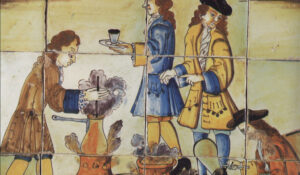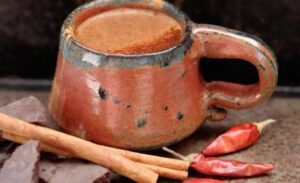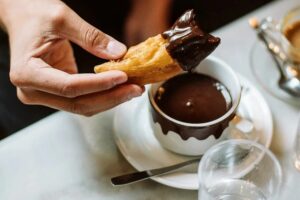The historical backdrop of chocolate, and its creation from the cacao tree beans, can be followed by the old Maya and, surprisingly, before the antiquated Olmecs of southern Mexico. “Chocolates” may invoke pictures of precious pieces of candy and tasty truffles.
Yet, the desserts of today look similar to the chocolate of the past: Throughout a lot of its set of experiences, chocolate was an unpleasant drink, not a sweet, rich-tasting treat. Yet, after it became famous in the courts of Europe and the roads of pilgrim America, chocolate before long developed into the all-around cherished where it is today.
Who Invented Chocolate?
Chocolate is produced using the product of cacao trees, which are local to Central and South America. The organic products are called units, and each case contains around 40 cacao beans. The beans are dried and simmered to make cocoa beans.

It’s muddled precisely when cacao came on the scene or who developed it. Per Hayes Lavis, social expressions caretaker for the Smithsonian’s National Museum of the American Indian, antiquated Olmec pots and vessels from around 1500 B.C. were found with hints of theobromine and the energiser compound tracked down in chocolate and tea.
It’s an idea the Olmecs utilised cacao to make a stylised beverage. Be that as it may, since they kept no recorded history, feelings vary on assuming that they employed cacao beans in their mixtures or simply the mash of the cacao unit.
Mayan Chocolate
The Olmecs without a doubt, gave their cacao information to the Central American Maya, who not just consumed chocolate and respected it. The Mayan recorded history refers to chocolate beverages utilised in festivals to finish significant exchanges and services.

Notwithstanding chocolate’s significance in Mayan culture, it wasn’t saved for the rich and robust. However, it was promptly accessible to nearly everybody. In numerous Mayan families, chocolate was appreciated with each feast. Mayan chocolate was thick and foamy and frequently joined with stew peppers, honey or water.
Xocolatl
The Aztecs took chocolate reverence to another level. They accepted cacao was given to them by their divine beings. Like the Maya, they partook in the charged kick of hot or chilly, flavoured chocolate drinks in fancy compartments. Yet, they additionally utilised cacao beans as cash to purchase food and different merchandise. In Aztec culture, cacao beans were viewed as more significant than gold.

Aztec chocolate, which they called xocolatl, was generally a privileged excess, albeit the lower classes delighted in it at times at weddings or different festivals.
Maybe the most infamous Aztec chocolate admirer of everything was the Aztec ruler Montezuma II who supposedly drank gallons of chocolate daily for energy and as a love potion. It’s additionally said he saved a portion of his cacao beans for his military.
Spanish Hot Chocolate
There are clashing reports about when chocolate showed up in Europe, although it’s concurred it previously showed up in Spain. One story says Christopher Columbus found cacao beans after blocking an exchange transport on an excursion to America and took the beans back to Spain with him in 1502.

Another story states that Spanish conqueror Hernan Cortes was acquainted with chocolate by the Aztecs of Montezuma’s court. After getting back to Spain, cacao beans close by, he kept his chocolate information a very much watched secret. A third story guarantees that monks who introduced Guatemalan Mayans to Philip II of Spain in 1544 brought cacao beans along as a gift.
Regardless of how chocolate got to Spain, by the last part of the 1500s, it was a much-cherished guilty pleasure by the Spanish court, and Spain started bringing in chocolate in 1585. As other European nations, for example, Italy and France, visited pieces of Central America, they additionally found out about cacao and took chocolate back to their individual countries. Soon, chocolate lunacy spread all through Europe. With the popularity of chocolate came chocolate estates, where many subjugated individuals worked.
Be that as it may, European palates weren’t happy with the traditional Aztec chocolate beverage recipe. They made their assortments of hot chocolate with raw sweetener, cinnamon and other everyday flavours and flavourings.
Before long, elegant chocolate houses for the rich sprung up throughout London, Amsterdam and other European urban areas.